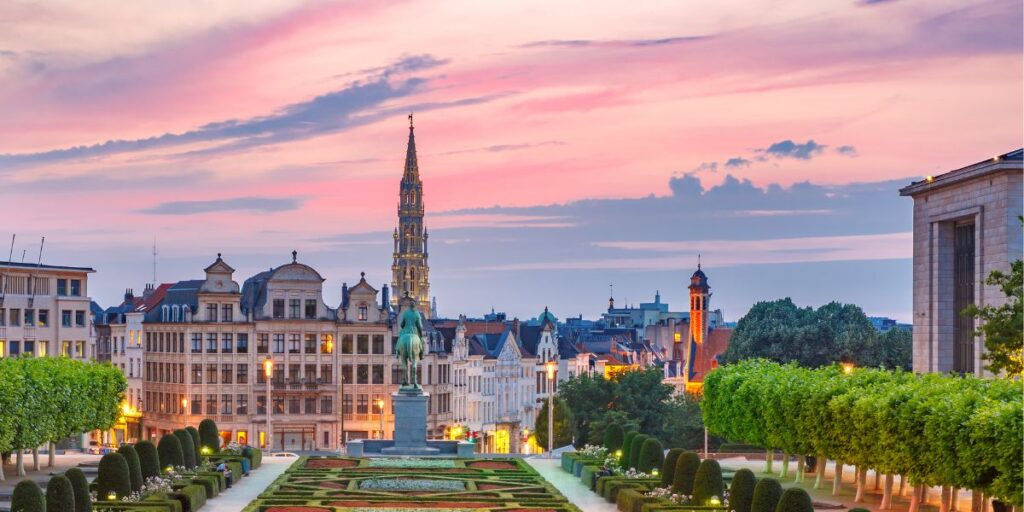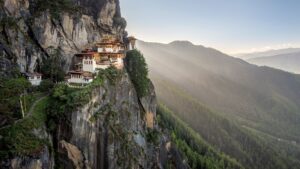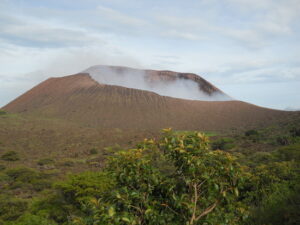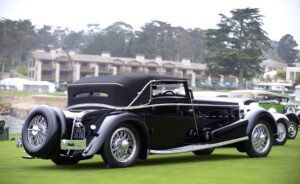TOP 5 THINGS TO SEE IN BRUSSELS: EUROPE’S BEAUTIFUL CAPITAL

Nestled between France, Germany, Luxembourg and Holland, Belgium is a mosaic of cultures and languages. Brussels is a city that values the variety this brings and makes good use of it. Furthermore, the Belgian capital is home to a rich history spread over its many museums and emblematic buildings.
Belgium has only been a nation for less than two centuries. However, that has not prevented it from becoming the headquarters of several of the most important institutions in Europe.
Such as the European Parliament. In Brussels, we find the essence of Europe. There are charming cafes and stores, a characteristic bohemian atmosphere and beautiful avenues.
Brussels is beer, chocolate and its impressive Grand Place, considered the most beautiful square in the world. But it is also a place of palaces, galleries and museums where you can see the importance of Art Nouveau. Plus, there are many parks where you can stroll and relax.
The capital also serves as a good base to visit other Belgian cities such as Antwerp, Ghent or Bruges. In addition, getting around the country by train is very fast and simple.
In this article, you will learn of the 5 top things to do in Brussels. These sights will allow you to discover the essence of this vibrant city.
ADMIRING THE GRAND PLACE: THE MOST BEAUTIFUL SQUARE IN EUROPE
The heart of Brussels beats in its Grand Place. This is the perfect spot to begin a tour of the city. The writer Victor Hugo said that this square was the most beautiful in the world.
We will not be the ones to say otherwise. Its beauty lies in the perfect combination of architectural styles, from Gothic to Baroque, which has made it a World Heritage Site.
In this cobbled square, each of its buildings tells a piece of the history of this city since the eleventh century. Originally, this was the site of a food market. In fact, the names of the streets surrounding the square evoke cheese, herbs and poultry.
On one side stands the Gothic town hall, built in the 15th century. Another of the most important buildings on the square is the Maison du Roi.
This is a wooden building where formerly bread was sold. It now houses the Museum of the City where the hundreds of costumes that make up the wardrobe of the Mannekin Pis are kept.
Finally, the Maison de Ducs de Brabant is a set of neoclassical buildings with Flemish roots that is also worthy of admiration.
In addition, you cannot leave the Grand Place without sitting down to taste a Belgian beer on the terrace of Le Roi d’Espagne. From here you can contemplate this unsurpassed architectural ensemble and the movement of people in the square.
VISIT THE MANNEKEN PIS
Very close to the Grand Place, in the old part of the Belgian capital, stands this statue created in 1388. Though only 55 centimeters high, it has become one of the most representative and beloved symbols of Brussels. It represents a naked child urinating in the basin of a fountain.
In 1698 a governor gave the first piece of clothing to the Mannekin Pis. There are now 650 outfits that have been given to him by the presidents of governments that have visited Brussels. On certain occasions during the year, the City Council dresses the original statue in one of these costumes.
ENTERING THE ROYAL ST. HUBERT GALLERIES
These galleries were designed in 1847 and are the first commercial galleries in Europe. A huge glass dome covers the galleries letting light into the interior.
They are about 200 meters long and are divided into three zones: the Queen’s Gallery, the King’s Gallery and the Prince’s Gallery. These galleries connect the area of the Théâtre de La Monnaie with the Grand Place. They create a connection between the historical part of the city and the more modern part.
Since their construction, they have been a meeting point for artists and intellectuals as well as a destination for the wealthy class of Belgium.
Today, this beautiful gallery is a very busy spot in the city. Here, you can visit jewelry and chocolate shops and exclusive stores, eat in a restaurant and even enjoy a small theater and a cinema.
STROLLING THROUGH ONE OF THE BEAUTIFUL PARKS
Brussels can boast of being one of the cities in Europe with the most green spaces per capita. The following three parks are some of the most beautiful and well-known in the city.
The Cinquantenaire Park is probably the most famous and most visited park in the city. It was created to celebrate the 50th anniversary of Belgium’s independence at the Universal Exposition of 1880.
Inside this park are several museums. These include Autoworld (the Automobile Museum), the Museum of Military History and the Museum of Art and History.
However, the largest park and the main place of recreation in the city center is the Parc de Bruxelles. It is in the heart of the Quartier Royal, so it is surrounded by major attractions of Brussels such as the Royal Palace or the Parliament.
Finally, in Elisabeth Park is the imposing Basilica of the Sacred Heart, the fifth-largest church in the world. It is in a suburb of Brussels, but certainly worth a visit.
VISITING THE ATOMIUM: ICON OF BRUSSELS
This iron structure located on the outskirts of the city, in the Heizel district, is another icon of Brussels. It was built for the Universal Exposition of 1958. Although it was scheduled to be dismantled when the event ended, it was so well-liked that it remains permanently.
Its structure emulates the nine atoms of an iron crystal, which in turn represent the nine Belgian provinces, magnified several billion times.
In addition to admiring it from the outside, it is worth discovering its interior and its different spheres. Some of them contain a space reserved for a specific activity, such as exhibitions on its construction.
They are connected by tunnels with escalators. The most interesting is the upper one where there is a restaurant and a viewpoint from which you can see the city of Brussels.






